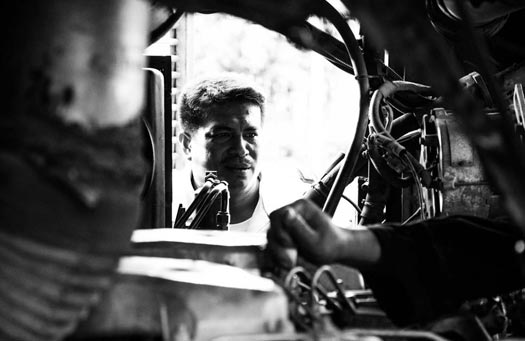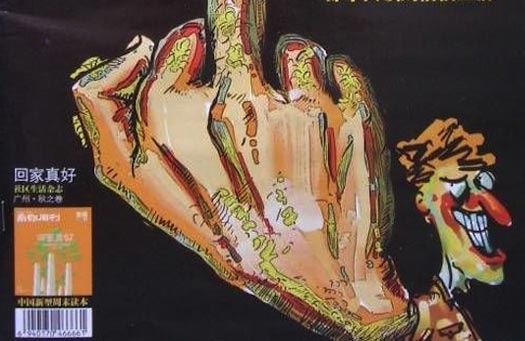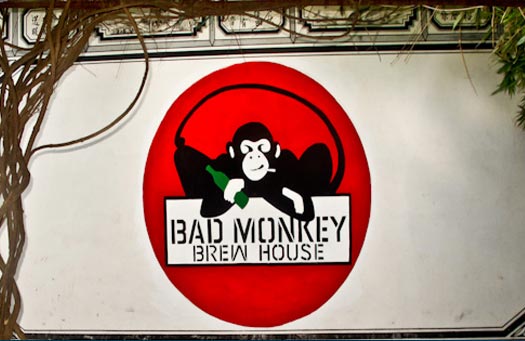MUCH OF THE REPORTING about the blaze that destroyed close to 300 homes and businesses in Shangri-la—otherwise known as Zhongdian, capital of Diqing Prefecture, a Tibetan Autonomous Prefecture in western Yunnan Province—has fixated on the “ancient” Tibetan quarter of Duzekong.
But, the tragedy of homes and businesses destroyed aside, there was little about Duzekong—better known in recent years as Shangri-la—that was “ancient.” Shangri-la was, for the most part, a commoditized, state-endorsed face of Tibet.
Matthieu Lelievre, a Belgian owner of a guesthouse in the old town—Kersang’s Relay Station—whose business was was nearly saved by firefighters using water storage tanks on the rooftop of his building, as nearby buildings were bulldozed, confirmed that almost all the buildings in the vicinity of his business were destroyed. They included The Raven, one of the longest running and most celebrated bars in the old quarter of Shangri-la.
Lelievre posted on Facebook, late on Sunday, that his guesthouse had not survived the blaze, and that 60 per cent of the old town had been destroyed. Remarkably, no deaths have been reported. State media has ruled the cause of the blaze an accident, and that the official count of homes and businesses destroyed stand at 242, with “43 other buildings … dismantled to prevent the fire’s spread.”
According to a New York Times blog post, the blaze started in the Ruyi Inn shortly after 1am—the owner, a Shanghai native has reportedly been detained—but another report in the South China Morning Post said police were still investigating the source of the conflagration. Meanwhile, sources I spoke to in Yunnan said that initial fire-fighting efforts were hampered because water supplies were frozen.
A local business owner told me by email, “Most people agree this tragedy was kind of expected, sooner or later. There was not a real emergency plan, especially during the dry and cold winter, when it’s impossible to get any water.”
The blaze is undoubtedly a tragedy, but Zhongdian—which won a nationwide bid for the title of Shangri-la from the State Council of the People’s Republic of China (PRC) in 2001—is home to little that is authentically Tibetan or “ancient.”
A reference to the lost-in-the-mountains paradise of James Hilton’s 1937 Lost Horizon—one the world’s first best-selling “penny paperbacks”—Yunnan’s Shangri-la was largely built after being rechristened as Shangri-la in 2001.
Writing in the Journal of Macromarketing in November 2011, a report by Rosa Llamas and Russell Belk, “Shangri-La: Messing with a Myth,” noted:
“With the adoption of the Shangri-La brand name in Zhongdian, the process of creating a marketable touristic destination started in earnest. It was accompanied by a beautifying process for the area, including ‘‘plastic surgery’’ and ‘‘makeup’’ (e.g., an international airport and mega-hotels, both decked out in Buddhist iconography). Infrastructure built to attract tourists also includes restaurants, shops, museums, a renovated Monastery, a reconstructed Old Town, a new temple, and paved roads leading to natural attractions.”
During visits to Shangri-la, I heard repeatedly that monks at the “renovated monastery” “worked” nine-to-five, and were as likely to be Han Chinese as Tibetan—preferably the former. I also heard that most of the heritage buildings that were still standing in 2001 were derelict, and attempts from certain quarters to rehabilitate and preserve them lost out—more often than not—to the imperatives of a drive to attract tourism traffic to the newly renamed, and suitably renovated old town.
In short, by the time the tragic blaze struck Shangri-la in the early hours of January 10 2014, burning for as long as 14 hours, according to some reports, there was little that was Tibetan about the “ancient” town at all.
Foreign media attention on the oddities of Chinese domestic tourism generally focus on its knock-off European cities, such as Thames Town—complete with cobbled streets and timbered Tudor-style housing—or its “eerily deserted” versions of Paris and Venice. Less noted, and far more successful in terms of mass tourism, are China’s recreations of its own history—and in particular “harmonized” minority-culture villages, where the locals sing and dance in traditional attire daily.
The point of Shangri-la, then, and as is the case with so much of China’s kitsch, traditional (and “minority”) tourist attractions built following four decades of despoliation of China’s traditional culture in the Mao era—and before that by long decades of incursions by Western entrepreneurial adventurers, the collapse of the Qing Dynasty, a protracted invasion by Japan, and the civil war between the Nationalists (KMT) and the Chinese Communist Party (CCP)—was to create an acceptable Tibetan landscape for domestic and foreign tourist consumption.
Shangri-la—which is bitterly cold for most of its very long winter (it’s more than 3,000 meters above sea-level)—enjoys seasonal tourist overspill from another reimagined historical tourist attraction, Lijiang, which was almost utterly destroyed in a 7.0 earthquake in 1996, and then rebuilt and bestowed with a Unesco World Heritage listing the following year. Three-hours distant by road from Shangri-la—and home to the matriarchal Naxi minority—Lijiang is now one of China’s most touristed destinations nationwide, though it bears little resemblance to the town that predated the 1996 earthquake (I was there in 1992 as a Lonely Planet researcher and can personally testify to this).
I remember Shangri-la from repeated visits between 2007 and 2010, when I was living in Yunnan, as a charming warren of alleyways lined with wooden buildings, but it resembled nothing I’d seen in Tibet or elsewhere in what is traditionally known as Kham—now all subsumed under CCP-over-lordship in western Yunnan and Sichuan provinces, and in the Qinghai Autonomous Region.
It was in Shangri-la that I first heard rumors of Seda (Sertha), a sprawling monastery complex in western Sichuan that had grown in size from a small hermitage—led by charismatic Nyingma-sect lama, Jigme Phuntsok—to become the biggest Buddhist monastic institute in the world, invoking the ire of the Sichuan authorities, who responded with an assault on the monastery. It was heady stuff, and it felt exciting to be on the edge of the “real’’ Tibetan world—even if Shangri-la itself was not.
But my best memories of Shangri-la—fake Tibetan tourist attraction or otherwise—are of late-night drinks in The Raven with British owner Jason Lees, who I have been unable to contact, and cozy curries in wood-fire-heated cafes run by returnees from India’s Tibetan refugee center of Dharamsala.
To imagine Shangri-la has mostly been destroyed is horrifying, but it’s worth bearing in mind that it was still being built when the fire struck. The likelihood is that Shangri-la will bounce back, perhaps even more “ancient” than before—and this time more fireproof.
Harvest Season, a novel by Chris Taylor, is available through Amazon in print and digital formats. In the UK: print, digital. Follow Chris Taylor on Twitter at @chrisvtaylor.






